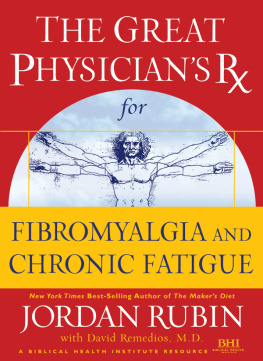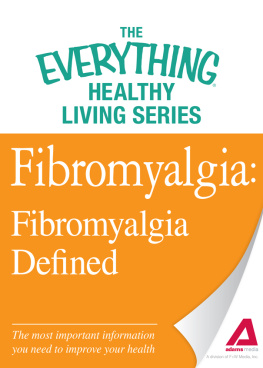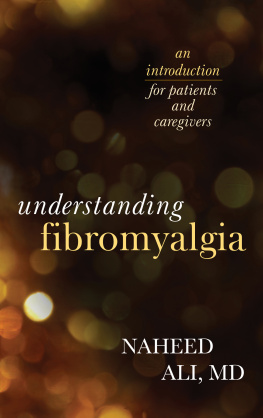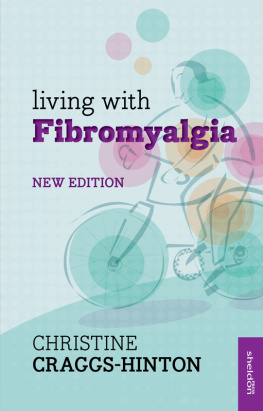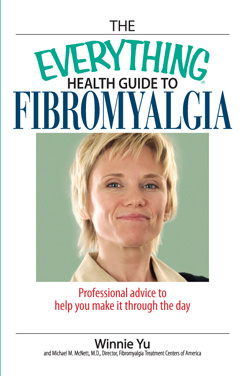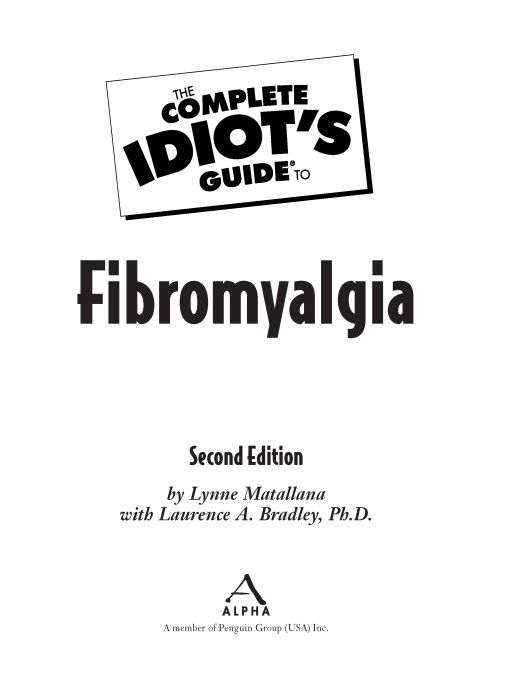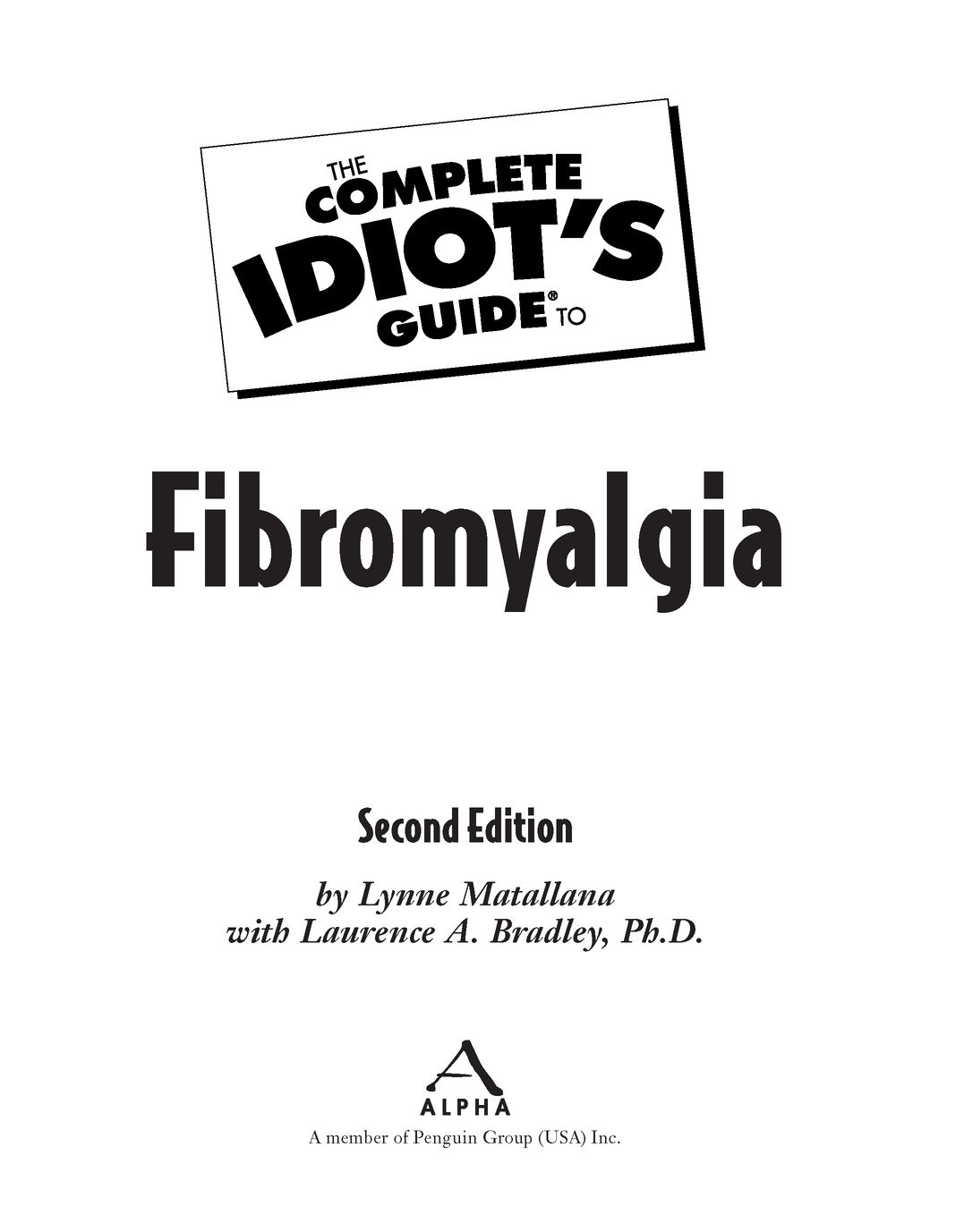Table of Contents
This book is dedicated to the millions of people worldwide who are living with fibromyalgia. May there come a day when the pain of fibromyalgia is a distant memory, and until then may we support one another and encourage others to understand our challenges.
Foreword
Fibromyalgia is a chronic disorder characterized by widespread pain and exquisite pain sensitivity that may produce high levels of suffering and greatly diminish your quality of life. These potentially negative effects are frequently compounded by inadequate knowledge of the physiologic abnormalities that contribute to the primary symptoms of the disorder. The inadequate knowledge also makes it difficult for many health-care professionals and patients to treat fibromyalgia as a chronic disorder. A large number of books have been published over the last 10 years regarding fibromyalgia, and a great deal of information is available on the Internet. Many of these sources provide helpful information about the current understanding of the pathophysiology of fibromyalgia as well as the medical and behavioral treatments that may produce symptom improvement. Until now, however, there have been no books devoted to educating patients about the ways they can actively self-manage their symptoms with the help of health-care professionals.
The Complete Idiots Guide to Fibromyalgia, Second Edition, written by Ms. Lynne Matallana, president of the National Fibromyalgia Association, focuses primarily on helping persons with fibromyalgia understand and fully accept fibromyalgia. She wants readers to understand it is similar to other chronic illnesses, such as diabetes or rheumatoid arthritis, and is a disorder that cannot be cured by current medical or surgical treatments. Nevertheless, this book strongly emphasizes that, similar to patients with other chronic illnesses, individuals with fibromyalgia may learn to actively participate with their physicians and other health-care professionals, family members, and friends to manage their illness and produce optimal improvements in their quality of life. In other words, this book is an excellent guide for exchanging ones view of oneself as a passive recipient of treatments. The book will help you exchange views with a variety of people, including others who have little control of your symptoms, or an individual who is capable of developing a team of helpful persons who can identify self-management strategies that will best enhance your quality of life.
Readers of this book may be concerned that self-management is a term that really means toughing it out on ones own or suffering silently without support from others. This interpretation is entirely wrong. Instead, self-management is really a process of (a) identifying effective approaches to pharmacologic, behavioral (for example, exercise), and psychosocial treatment; and (b) identifying better methods of interacting with health professionals, family, and friends to improve physical and psychological health as well as your ability to perform productive and enjoyable activities of daily living. The latter process includes learning to alter deeply entrenched, negative patterns of behavior, thoughts, and emotional responses that contribute to a diminished quality of life. The approach advocated by Ms. Matallana is based on the premise that the best methods of self-management vary among individuals. Moreover, self-management of a chronic disorder, such as fibromyalgia, does not have a time limit. Instead, self-management is a process that goes on throughout your lifetime but may have to be changed over time to maintain the best possible quality of life.
This book presents helpful instructions and other tools that people with fibromyalgia can use to learn to self-manage their disorder. It also recognizes that self-management is difficult for most individuals. However, this book always maintains a very positive approach that includes great empathy for the problems that confront patients with fibromyalgia. It also contains detailed instructions on the behavioral and cognitive changes that highly motivated individuals may make to improve their health status and other dimensions of their lives.
Laurence A. Bradley, Ph.D.
Introduction
Over the past decade the public, medical and scientific communities have come to better understand what it means to live with fibromyalgia. Although misperceptions still exist, fibromyalgia is now a subject that receives daily attention by the media, and continues to become of interest to educational institutions, professional organizations, businesses, and government agencies. Although fibromyalgia patients continue to have to search for knowledgeable health-care providers in their communities, and we havent discovered the magic bullet cure, having fibromyalgia is not as disheartening as it was in the past.
Even over the past few years there have been great strides made in the scientific understanding of this chronic pain disorder. As the science shows us that fibromyalgia is a condition of pain amplification in the nervous system, we are better able to discover new and improved treatments that will help patients to find a better quality of life. Whereas in the not so distant past people with fibromyalgia were living with what was considered an invisible illness, today a new awareness exists and fibromyalgia is accepted as a life-altering disease that affects millions of people around the world.
I believe that the future continues to look brighter and people with fibromyalgia have more hope than ever before. However, we know that fibromyalgia remains a challenging disease and patients must continue to find ways to better self-manage their symptoms.
This book focuses on the importance of taking things a day at a time and working toward creating a lifestyle that will result in both emotional and physical well-being. Throughout this book you learn how to evaluate, develop, and implement techniques that will take you from being a patient who is desperate and miserable to becoming a happy, productive, healthier personone who just happens to have fibromyalgia.
The journey of moving from being a fibromyalgia patient to a person who lives well despite fibromyalgia is not always easy. But throughout this book you will find information that will help you to discover ways to ensure that you will have a happier and healthier life. The information that is contained in this book will provide you with insights and techniques that will help you to become a fibromyalgia survivor!
How This Book Is Organized
To help you live better despite fibromyalgia, Ive organized The Complete Idiots Guide to Fibromyalgia, Second Edition, into a step-by-step process to help you develop a personalized self-management program. From diagnosis to a quality life beyond fibromyalgia.
Part 1: Where Do I Start?
Whether the onset of fibromyalgia was drawn out over a long period of time or as the result of a trauma (causing symptoms to virtually appear overnight), you will find yourself facing countless questions, wondering what methods will help you cope, and asking what will eventually improve the symptoms of this chronic pain condition. As you come to better understand this illness and accept the fact that although it is chronic in nature, you can take back control of your life, you will learn what options are available to help you. By developing your own self-management plan, you will be better able to manage your symptoms, discover what works best for you, and improve your outlook and overall quality of life.


